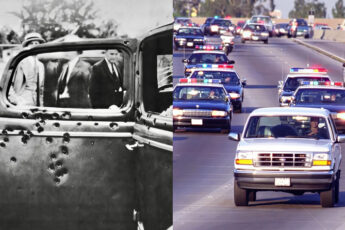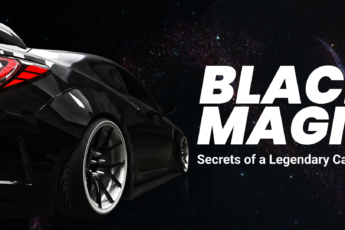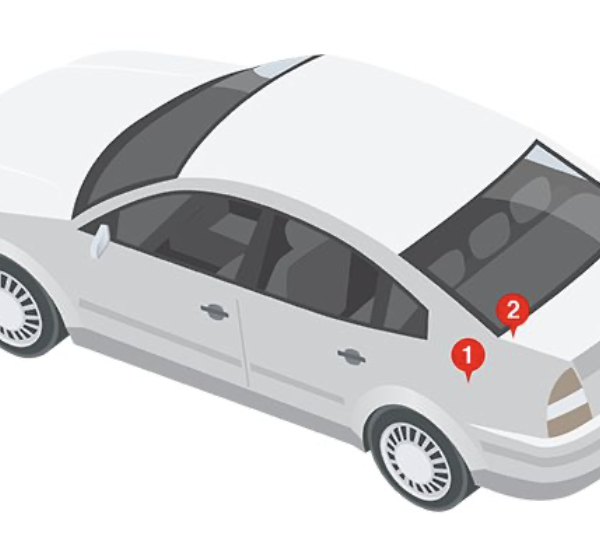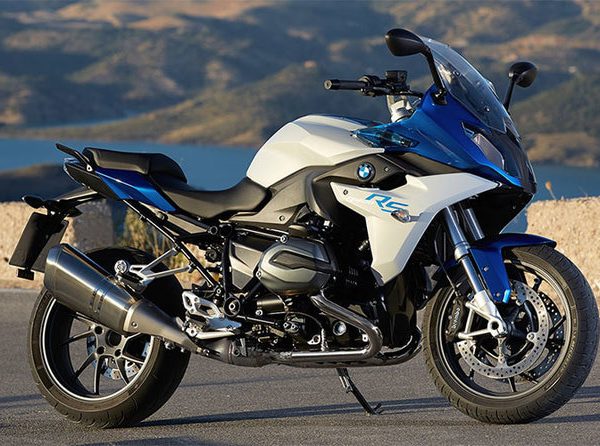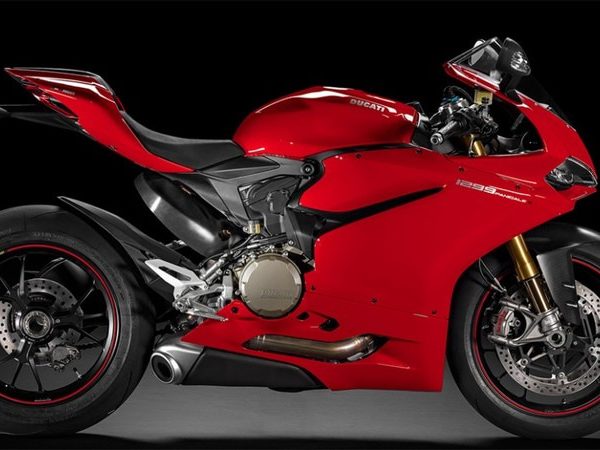What Your Vehicle’s Color Says About You
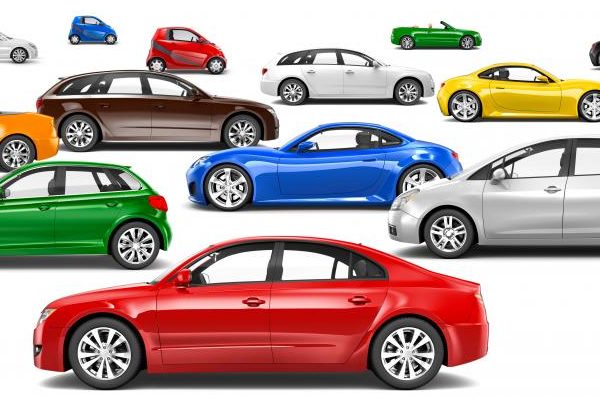
Several factors influence car buying decisions–budget, needs, and personal styling preferences. But certain paradigms or conventions are well-known throughout modern culture, such as the muscle cars like red Corvettes and Mustangs, the mysterious black SUVs used by government agents in the movies, and the popularity of black or white limousines. Many emergency vehicles use striking color schemes to help them stand out from ordinary citizen vehicles.
And your mood as well as your means will strongly influence the type and color of car you purchase. Maybe you bought that green sedan four years ago because you liked the economy it offered, but now you’re daydreaming about a red convertible with white wall tires.
Could it be that your children are grown and more independent, so you can think about yourself once again?
Maybe your color preference means more than just “I like this color”.
Do Colors Have Special Meanings to Everyone?
Evolutionary theory suggests that nature has adopted certain conventions in color choices, although you can always find exceptions to the rule. Take red, for example. This is almost universally viewed as a color of passion because it is associated with blood and fire. There are also beautiful red flowers, vibrant red sunsets, and incredible rainbows of red among the trees when autumn changes the deciduous forests around us.
Red is exciting because it represents life, change, and risk. Many Asians choose red as one of their three lucky colors (along with yellow and green). In Europe and the Americas, red is often used as a warning color.
Green is also an almost universally valued color. We associate green with life, good health, ecology, and growth. But we also associate green with evil, envy, sickness, and infidelity.
Yellow is the godly color; it’s the color of the sun. In many myths the most powerful gods are associated with sunlight.
Purple is the royal color in both Asia and Europe.
But the way we view and value colors change across the years and for many reasons. Any new philosophy can introduce a color scheme that contradicts earlier color schemes.
The Psychology of Color in Modern Terms

Many a psychology study has been commissioned to help us understand how and why we choose colors, and one very popular topic among these studies is the color of the cars we choose. Industrial giants like the DuPont and Ford Motor Company publish reports on which car colors are most popular with their customers. In 2007 Ford reported that 39% of customers leave dealerships that don’t have the cars they want in their favorite colors.
Even insurance companies have dabbled in color choice analysis, although not in the way you expect. Despite a widespread belief that car color affects your insurance rates, insurance companies insist that is not true. After all, popular car colors change from year to year and insurance measures risk based on factors that are consistent over time. The actuaries have probably crunched the numbers more than a few times to prove that car color choice does not predict who is most likely to file a claim.
But your make, model, and body type strongly influence the probability that you will file a claim. Some sporty vehicles are only sold in the most popular colors. So there might be some coincidental truth to the myth from year to year but it’s nothing science (or the insurance industry) will rely on.
Color Choices Vary by Region, Culture, Gender & Other Factors
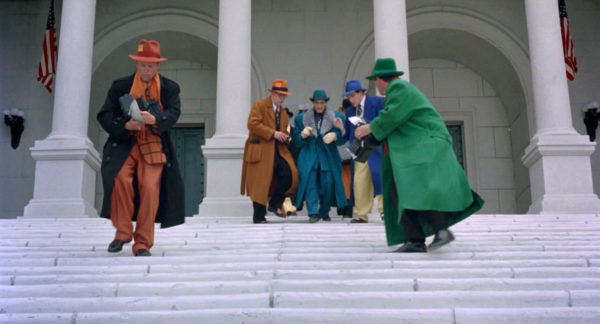
The movie Dick Tracy used only five main colors (blue, green, orange, purple, red, and yellow) plus black and white to mimic the Sunday comic strips on which the movie was based. Everything from clothing to cars had to be carefully dyed or painted to match one of those main colors. But critics and the film designers all agree that the comic book colors don’t reflect our real-life color preferences. According to the Wall Street Journal you will find the greatest variety in car color choices in India and the highest percentage of black, white, and silver cars in South Korea.
Research also suggests that men prefer simpler color schemes while women typically prefer many different shades of color. So what a man sees as “red” a woman may see as “maraschino” or “cayenne”. In fact, about 25% of all women can perceive shades of red that no men can see.
Your Color Choice Is an Expression of Your Personality and Mood
Say you buy a blue two-door sedan. Maybe that’s not your first choice for a car, but it’s what you can afford and what was available. Your choice reflects the compromise you made between what you wanted and what you could get. There may have been a silver model available that you didn’t want.
People choose colors for other reasons, too. Maybe you want your color to express your feelings about your astrological sign. For example, blue is the color for Virgo, green is the color for Libra and Taurus, indigo is the color for Capricorn and Pisces, orange is the color for Gemini, red is the color for Aries and Scorpio, violet is the color for Aquarius and Cancer and Sagittarius, and yellow is the color for Leo.
Some people also express their blood group types through color. Blood group “O” uses pink, red, and yellow. Blood group “A” uses blue, dark blue, and green. Blood group “B” uses violet. And blood group “AB” uses blue, dark blue, and green just like the “A” group.
Most people around the world prefer neutral colors for their vehicles: black, blue, grey, silver, and white. These are the conformist colors, and while being a conformist is not bad in any way, the people who prefer other colors for their cars may be expressing their feelings in some special way.
But sometimes your industry also dictates the choice of color. Taxis most often use black, green, and yellow in their color schemes. Fire fighters drive red-painted vehicles. Most ambulances use red, white, and maybe a third color (often yellow).
What Influences Your Favorite Colors?
Why do some people prefer red to green, blue to yellow, and pink to orange?
Scientists have tried to find out and some research suggests that your personal experiences have a lot to do with your color preferences. It makes sense, too. If you grew up in a heavily forested area and move to the desert, you might miss the rich green leafiness you knew. You might also miss the earthy browns and tans of the desert if you move into the city.

But your manmade surroundings can also influence your color preferences. Perhaps you live or work in a neighborhood with certain color schemes for many years, and when you find yourself moving on to a new neighborhood, you find you miss the old familiar colors. School spirit also identifies strongly with the “school colors” because they are used to symbolize the school on many occasions.
In fact, vexillologists, people who study flags, point out that throughout history battlefield and heraldic flags are sometimes referred to as “colors”. Motorcycle clubs adopt special emblems that they refer to as “colors”. Flashing your membership tattoo is equivalent to waving your group’s flag.
If you grew up in a family that only bought blue cars you might be strongly influenced to buy blue cars yourself. You might also be more influenced to buy muscle cars if you and dad spent your summers working on muscle cars. But science may never be able to explain why people buy station wagons unless they can find a connection to The Brady Bunch.
But another important influence on your color choices is marketing.
Companies that make the things we buy decide for us what colors their products come in, even automobiles. Your choice of car color is limited by the colors the manufacturer provides and your ability to pay for a special paint job.

Marketers devote resources to learning which styles, shapes, and colors consumers will buy (and why they make those purchases). Maybe you want a Teal Impala but can’t find one because you’re the only person who wants to buy such a car. So the manufacturer won’t roll them off the line in that color, although your dealer can paint the car for you.
When you watch your favorite car commercials pay attention to the colors of the vehicles used in those advertisements. Their colors distinguish them from the background vehicles, but they are often neutral colors reflecting the “most popular” color choices among consumers. And so we should ask “Which came first, the consumer color choice or the advertising color?” After several decades of market research the answer seems to be closer to “both” than anything else.
Your color preferences are often strongly influenced by the colors of the brand you favor, too.
How would that work when you buy an automobile?
Look at the colors of the emblems used by brands like Cadillac, BMW, Toyota, and other manufacturers. Many of them use chrome as a base for their emblems because they attach those emblems to their vehicles, but they often use distinctive color schemes to help their emblems stand out.

Ford uses black and blue. Corvette uses red and black. Cadillac uses black, tan and red. BMW uses black, white and blue. Toyota uses red. These companies use a combination of shapes and colors. Your pearly white finish may look better to you with your manufacturer’s emblem than some other colors. Science has shown that how brands use colors in their logos has a direct impact on consumer buying behavior.
How Your Color Choice Reflect Your Personality
Color plays an important role in our personal choices and preferences, but does it really reveal to others who you truly are? Probably not.
We change our color preferences all the time in small, subtle ways. Today you choose a blue coffee mug, but tomorrow you choose a brown mug. Still, let’s have some fun and look at how colors often reflect your mood or some aspect of your personality. Your car color can definitely say something about how you were feeling when you bought it.

RED implies you’re feeling ambitious if you are in a red mood, or maybe you’re angry, feeling passionate and inextricably drawn toward someone or a specific goal. When you choose red you mean business and people may perceive you as strong, vital, and active.
ORANGE is a flamboyant, outgoing color. This is the color of life, fun, and faith in others. Orange is all about the Great Pumpkin, Charlie Brown, and working together with others. Some people associate orange with frugality and wise money management, too.
YELLOW is a bold color, the color of the daylight. It’s often associated with adventure, wealth, and power. People who express their feelings in yellow are not afraid of the challenges that lay before them. They dream of better days and may not settle for anything less than perfection. You might be in a very determined but positive mood when you buy a yellow car.
GREEN is the color of life and you may be feeling outgoing, friendly, and confident in the presence of other people when you are “feeling green”. Green is more group-oriented than other colors and your mood when you choose green may suggest you want to express love and friendship in return for love and friendship.
BLUE says your mood could have been serene and calm when you bought a blue car. Someone with an analytical personality may favor blue more often than other colors. Blue is also seen as a sign of faithfulness, stability, and sensitivity.

PINK is the ultimate feminine color. Unless they’re selling cosmetics, owners of pink cars may be expressing their love for others and their generally affectionate natures. Women who favor pink may want to be seen as soft, gentle, and desirable.
PURPLE is often chosen by sensitive and creative people. You may be feeling especially sensitive if you are in a purple mood when you buy your car. Or you may be on the verge of a creative outburst in which you surpass your past achievements. Don’t be afraid to embrace the purple in you because you may be cultivating innate talents you did not know you had.
BROWN implies that you want to keep things simple when you are in your brown state of mind. You may even be steadfast to the point of obstinacy. People who prefer brown are often viewed as persistent, frugal, and maybe even stubborn. You feel like getting to the point: “I’ll take the brown truck. Where do we sign the contract?”
BLACK is the color of authority, power, and mystery. People who say their favorite color is black don’t care who else says, “Black is not a color.” Your black mood can indicate a choice to hide something about yourself, or it might mean that there is more depth to you than most people realize. Choosing black is almost akin to making a statement of power. Many wealthy people drive black vehicles.
WHITE reveals that you are disciplined, in control of yourself and your feelings. It may also mean you feel like you have nothing to hide. Although white is associated with “death” in Asia, it’s associated with marriage, life, and purity in Europe and the Americas. People who buy white cars may be saying, “Depend on me. I will get the job done.” You may be feeling confident when you buy a white car.
More Car Colors
BLUE-GREEN suggests you feel secure in your finances if you buy a blue-green car. This is a vehicle color that mixes the sincerity of blue with the successfulness of green. Not many people buy blue-green cars, but you can see them from time to time. Blue-green is associated with good taste, poise, and elegance.
GREY is the most neutral of the neutral colors but it is more drab and reserved than silver. Don’t read too much into your purchase of a grey sedan. Maybe that was all there was to choose from because you waited for the end-of-year sale. Your choice of grey may be saying, “I’m working hard toward my goals and willing to do whatever it takes.”
SILVER is a more exciting color than grey. Silver is a space age color, a color associated with chrome, innovation, technology, and wealth. People who choose silver vehicles may be making subtle statements about their ability to buy what they need without screaming out “I am wealthy!” to the world. Silver is a very self-secure but neutral color.

 Cart
Cart
 Help Desk
Help Desk

